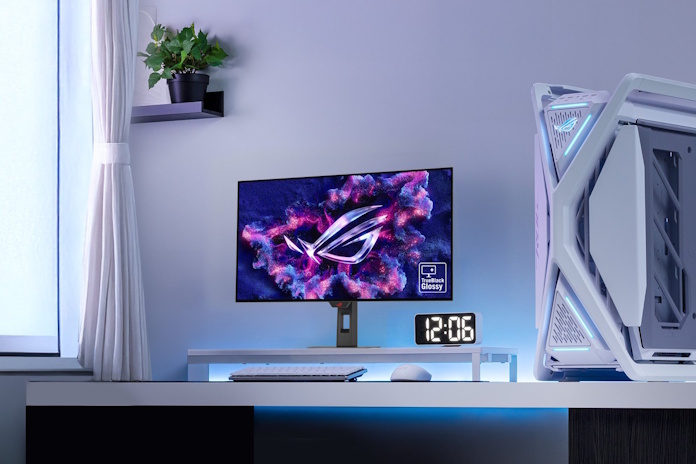If it’s been a while since you last checked in on the gaming monitor market, you’re in for a treat. The last few years have seen a whirlwind of innovation in the display space. Whether you’re an enthusiast seeking out cutting-edge tech, a mainstream gamer looking for a high-impact upgrade, or a PC gaming neophyte building your first setup on a tight budget, you’re spoiled for options in 2025.
The holiday shopping season — and the tempting deals that always accompany it — is just around the corner. Here, we’ll arm you with the info you need to find the best gaming monitor for your setup. We’ll start with a back-to-basics cheat sheet on the key technologies that matter most to gamers, get you up to speed with the latest developments in the gaming monitor space, and wrap up with some straightforward recommendations for different types of gamers.
The display specs that matter most to gamers
PC gamers tend to have a very distinct checklist when it comes to their monitors. As a gamer, you need to get to know the features that matter most for you so that you can effectively compare your options.
Resolution and size
1080p was the standard resolution for many years, offering users a 1920×1080 array of pixels. If your rig has a modern graphics card, your games can run at very high refresh rates at 1080p. These days, it’s mostly competitive esports gamers who are seeking out 1080p gaming monitors, as they tend to prioritize ultra-high refresh rates above all else, but 1080p monitors are also a wallet-friendly choice for entry-level gamers.
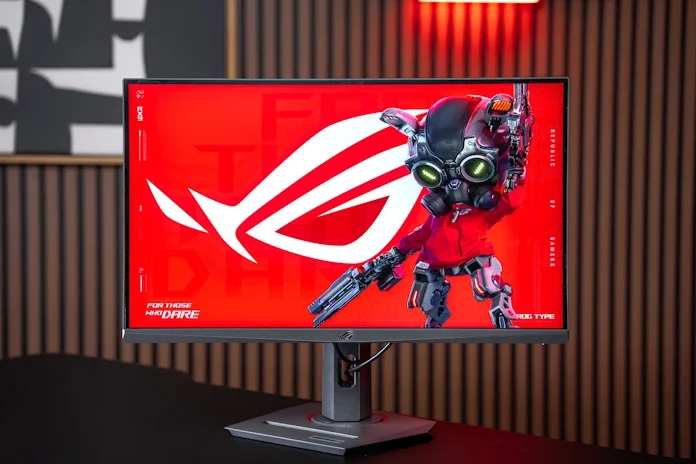
Most mainstream gaming monitors in 2025 feature a 2560×1440, or 1440p resolution. Why has 1440p become so popular? Primarily, it’s about image quality. The increased pixel count gives you a more detailed image than 1080p at the same screen size. This resolution is also a great fit with today’s graphics cards, since even mainstream GPUs can produce excellent frame rates at this resolution. Pricing plays a big role here, too. The price difference between 1080p and 1440p LCD gaming monitors really isn’t that large anymore.
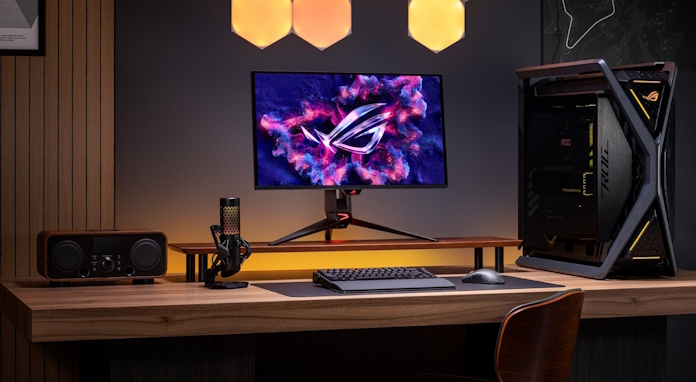
Monitors with a 4K, or 3840×2160 resolution, offer a premium gaming experience with exceptionally detailed images. With displays sizes up to 48 inches, 4K monitors are perfect for anyone who desires a large window into gaming worlds or exceptionally high pixel densities. Gaming at 4K does require a more powerful GPU, but technologies like DLSS and FSR have leveled the playing field in this regard, making 4K gaming more accessible than ever.
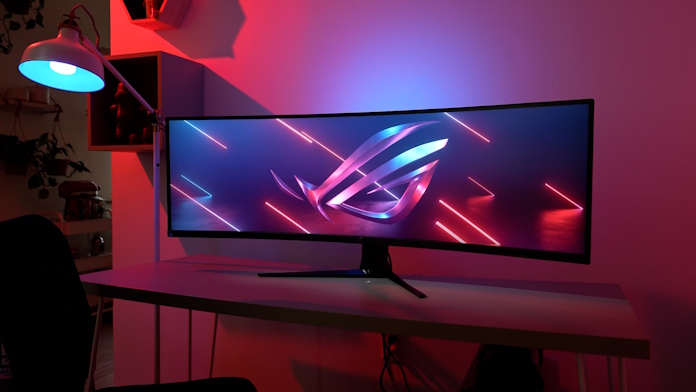
Finally, you might be interested in an ultrawide display. These monitors provide extra horizontal screen space for heightened immersion in your favorite games. As with the more common 16:9 aspect ratio, there are a wide array of options. A 21:9 aspect ratio monitor gives you a wider window into your games, usually with a 3440×1440 or 2560×1080 resolution. 32:9 super-ultrawide displays give you the same experience as having two 16:9 monitors sitting side by side, but in one seamless display. These models are especially popular among racing and flight sim enthusiasts, but don’t discount how much they add to your experience in first-person shooters, as well.
Refresh rate
Your monitor’s refresh rate indicates how fast it can refresh the content on the screen. The higher the refresh rate, the more fluid on-screen motion can look, and the more responsive your system can “feel” to keyboard and mouse input, especially in competitive games.
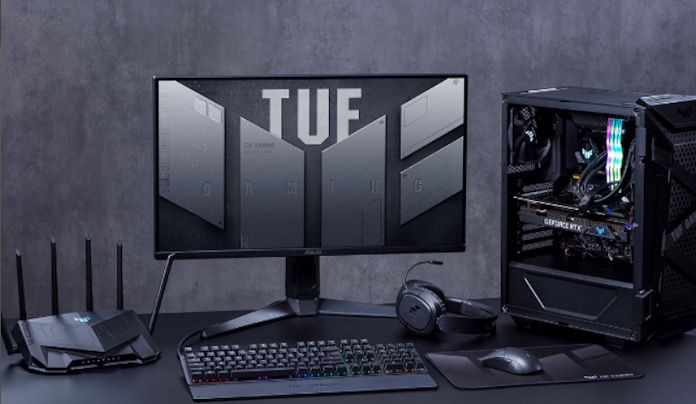
Right now, we recommend that gamers look for 144Hz or 165Hz at minimum, even if you’re shopping on a tight budget. You’ll find many affordable gaming monitors with refresh rates in this range. How much refresh rate is enough? As a rule of thumb, it’s good to have a max refresh rate that’s comfortably higher than the average FPS of the games that you play the most. That’ll help you avoid visual anomalies like screen tearing. If you mostly play the latest AAA adventures, you won’t need to over-invest in refresh rate, but if you like to compete in online esports games, push your target up accordingly.
Response time
Response time measures how quickly a pixel can transition from one color to another. It is usually measured using a transition from one shade of gray to another, or the gray-to-gray response time. This figure is typically specified in milliseconds, and lower response times mean crisper on-screen motion with less blur.
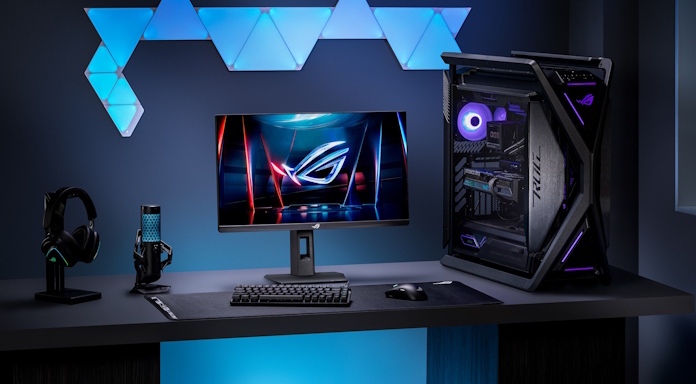
A response time of 3ms or better is a good starting point for gamers, but monitors with a 1ms response time will keep fast-paced motion very clear. If premium image clarity in fast-paced content is a priority for you, check out our lineup of ROG OLED gaming monitors. These displays can offer response times of less than 0.2ms.
Color performance and HDR support
For the most vivid, lifelike visuals in your favorite games, purchase a monitor with excellent color gamut coverage and HDR support. Regardless of panel type, better displays can show more colors than basic monitors, and this performance is quantified in reference to a standard color gamut, or a certain subset of all of the visible colors. The most commonly used color gamut is known as sRGB. Monitors that claim 100% sRGB coverage will look great with most types of content and games available today.
Displays with wide color gamuts, such as DCI-P3 and Adobe RGB, can reproduce more saturated or vivid colors than monitors that only support sRGB. They’re a great fit for people using an operating system that supports DCI-P3, or folks working in creative fields like filmmaking.
DCI-P3 support is especially relevant for high dynamic range (HDR) monitors. These screens can display a much wider range of brightness levels from dark to light, resulting in more lifelike images and potentially stunning effects for content like flashes from explosions or the sun peeking out from behind a mountain.
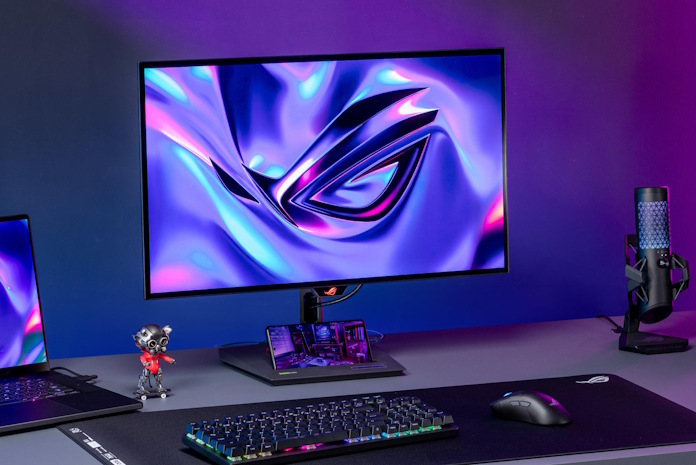
HDR support is commonly certified independently by the standards body VESA, whose DisplayHDR program sets a range of performance standards for HDR monitors, including those from ASUS. VESA DisplayHDR 400 monitors offer a welcome boost in brightness along with assurances about contrast and color performance. DisplayHDR 600 monitors up the ante with significantly elevated minimum peak luminance and static contrast ratio. For dazzling, exceptionally detailed highlights, a premium DisplayHDR 1000 monitor will give you an incredible experience.
OLED monitors are such game-changers that they’re certified via DisplayHDR True Black tiers instead. DisplayHDR True Black 400 is the first level of this certification system, but it’s tough to call it “entry-level.” You’ll have an excellent HDR experience with such a monitor, in no small part due to its astonishingly low maximum black level luminance. The contrast is off the charts.
Color accuracy
Some monitors are better than others at accurately representing colors, as compared to their theoretical representation within a color gamut. Displays will often advertise a rated specification known as average Delta E that measures accuracy. Professional creators who need to have their work appear consistent across different displays have long insisted on monitors that achieve an average Delta E of less than 2. ASUS ProArt displays are factory-calibrated to ensure a low average Delta E, so creative users can trust their work to these monitors right out of the box.
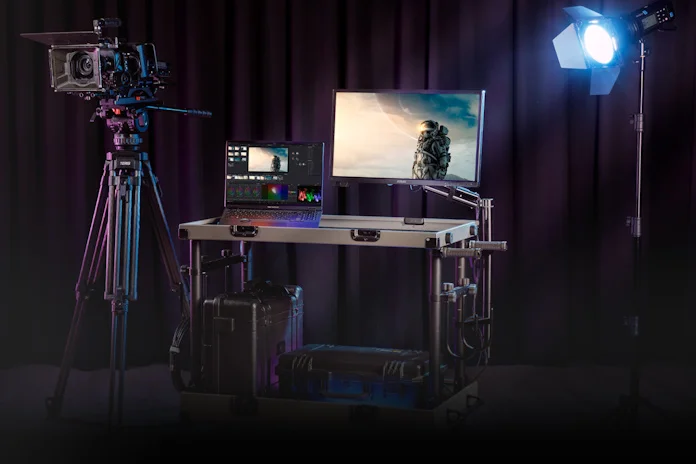
Content creators tend to talk about color accuracy more than gamers, but this specification is relevant for gaming, too. No small amount of artistry goes into the visual design of many games, and an accurate monitor helps ensure that you see a game as its creator intended. For a monitor that pairs professional-grade accuracy along with a full suite of gaming-first features, check out an ROG Swift OLED gaming monitor.
VRR support
Almost all modern gaming monitors support variable refresh rates, meaning that they can refresh what’s on screen right as the graphics card produces a new frame rather than simply refreshing a fixed number of times per second. If a monitor claims support for NVIDIA G-SYNC, AMD FreeSync, or Adaptive Sync, it supports variable refresh rates.
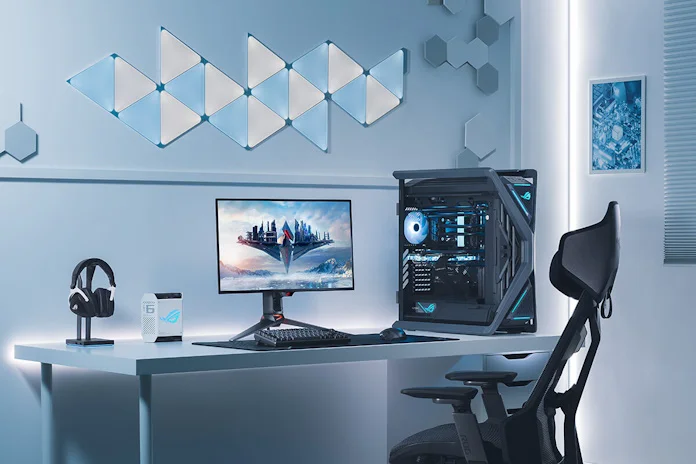
Monitors with variable refresh rates avoid an undesirable image artifact called tearing, where parts of multiple frames are visible on screen at once. So long as the GPU’s delivered frame rate is within its refresh rate range, a variable refresh rate monitor can cleanly draw each new frame as soon as it’s ready. This technique makes games look “smoother” and can make them feel more responsive to your input.
Variable refresh rate support should absolutely be on your checklist for your next monitor. The question in 2025 is what tier of G-SYNC or FreeSync you’d prefer. For example, NVIDIA has a laundry list of display specifications for any display with a G-SYNC Ultimate certification, so it’s a great way for ensuring that you’ll get a cutting-edge experience from your display without having to dig too far into the nitty-gritty details.
Connection type
Graphics cards offer DisplayPort and HDMI ports to connect to your display, and your new gaming monitor will connect to either of those port types without a fuss. PC gamers typically use DisplayPort by default, as older HDMI ports don’t always support features like variable refresh rate. For future-proofing concerns, you might want to invest in a monitor with a next-level DisplayPort 2.1 port. This technology only started to hit the market recently, though, so most of your mainstream monitor options will offer DisplayPort 1.4 ports instead.
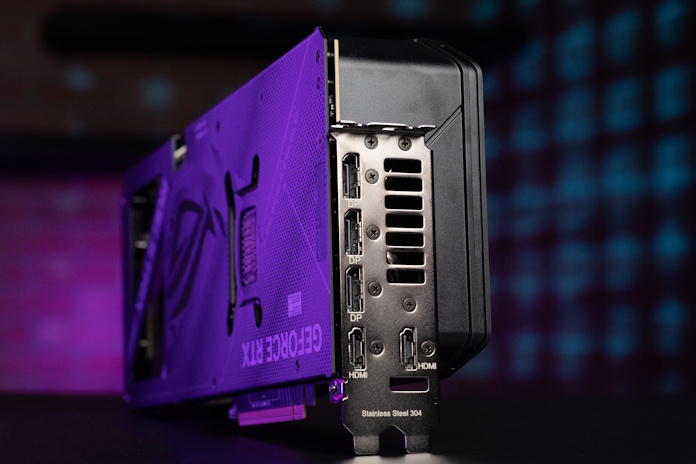
Consoles, on the other hand, rely on HDMI ports. If you intend to connect your display to both your gaming PC and a next-gen console, look for a monitor with an HDMI 2.1 port ready for the best combination of refresh rate and resolution your console can provide.
It’s also worth considering the other devices that you might want to connect to your monitor. A display with a USB passthrough, for example, can reduce the clutter on your desk by allowing you to connect one or more peripherals to a handy USB port on your display rather than to your desktop.
Display stand
Any monitor you buy is going to have some kind of stand, but monitor stands vary quite a bit. An entry-level stand won’t do much more than hold your monitor upright and give you a little bit of wiggle room for ergonomic adjustments.
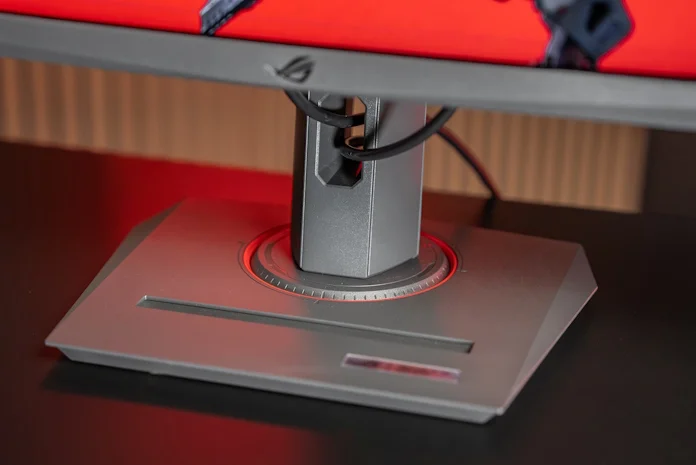
Perhaps that’s all you need from your stand right now, but we suspect that over the long haul you’ll be happier with a more feature-rich stand. With more ergonomic adjustments at your disposal, you’ll be able to game in comfort for longer without straining your neck. A more compact stand might be vital for your esports rig or dorm room setup. And you might be surprised by how much use you’ll get out of niceties like a smartphone holder, tripod socket, or cable management channel.
The changing landscape of display panel technology
Now that you’re armed with this information about display tech, you can make a choice about what kind of panel technology best fits your needs as a gamer.
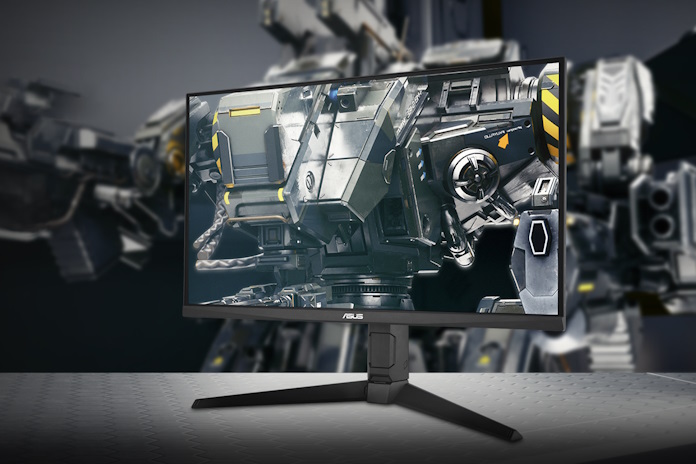
In 2025, most LCD gaming monitors use an in-plane switching (IPS) panel. These displays can offer an attractive balance of performance characteristics: wide viewing angles, vivid and accurate color reproduction, and solid contrast ratios. IPS panels are available in monitors of all types, from basic productivity displays to high-refresh-rate gaming monitors to professional displays for color-critical work. For gaming, the latest ASUS Fast IPS panels now offer response times similar to those of TN panels without any compromises in viewing angles or color reproduction.
Twisted nematic (TN) and vertical alignment (VA) panels used to be more popular in previous years, but they’re not very common in 2025. Today, TN panels are typically only found in esports-focused monitors that prioritize incredible refresh rates. Displays with TN panels excel when it comes to speed, but commonly fall behind other panel technologies when it comes to viewing angles and color production. VA panels are noted for their strong contrast ratios, generally fast response times, reasonable view angles, and vivid color reproduction, though if you’re looking for world-class contrast you’re better served with an OLED panel.
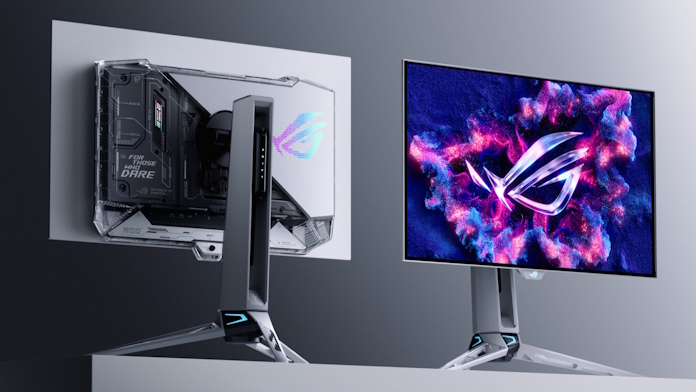
For gamers who dare to want it all, premium organic light-emitting diode (OLED) panels beckon with an astonishing set of display characteristics. Unlike TN, VA, and IPS panels, which rely on backlighting, each pixel in an OLED panel is its own light source. That allows these displays to deliver astonishing contrast with inky blacks and bright highlights. What’s more, they feature the lowest response times of any panel type alongside that vivid color reproduction. Dazzling refresh rates up to 520Hz at 1440p are on the menu, too, making it clear that this is the panel technology of choice for enthusiasts. On top of all that, the OLED gaming monitor market has matured considerably over the course of the last year, and now includes both mainstream and premium offerings in a range of sizes, resolutions, and aspect ratios.
The best monitors for any gamer
We’ve covered a lot of territory in this gaming monitor guide, so we’ll wrap things up with some practical recommendations.
- For gamers on a tight budget, we think that a Full HD 24-inch or 27-inch LCD gaming monitor is the way to go. You won’t need to spend more than $150 (USD) to get such a monitor, even at full list prices. Look for a display with a refresh rate that’s at least 144Hz, that offers variable refresh rate tech, and has variable overdrive for clear, ghosting-free images in fast-paced action.
- For value hunters, we recommend bumping up to a 1440p monitor. The increased resolution will reveal more of the detail of your gaming worlds, and the increased pixel density will give you a more comfortable viewing experience. You’ll find well-appointed 1440p LCD options between $200 and $300 (USD), giving you plenty of bang for your buck.
- For gamers seeking a next-gen display upgrade, we’ll point you to an OLED gaming monitor from ROG Strix. This panel technology is a true game-changer when it comes to contrast, motion clarity, and color performance, and options equipped with a glossy WOLED panel are helping to bring the tech to wider audiences. Giving yourself an undeniable upgrade over your existing LCD monitor will help ensure that you’ll love your new display for many years to come.
- For gamers who need a display that’s also ready for work, we recommend a 4K monitor. The increased resolution is invaluable for productivity and multitasking. A 4K 27-inch monitor will give you excellent pixel density for highly readable text, while a 4K 32-inch monitor will give you a large canvas.
- For gamers who play with a controller, we suggest investing in a larger 32-inch screen. That’ll let you lean back in your gaming chair while still feeling immersed. A 4K resolution is the best fit for this monitor size, but more-affordable 1440p options are available.
- For racing and flight sim gamers, we think that you should nab an ultrawide or super-ultrawide gaming monitor. The increased horizontal dimension brings the game into the periphery of your vision for heightened control and immersion. Options range from affordable 34-inch LCDs to premium OLED models, allowing you to select the model that best fits your needs and budget.
- For variety gamers, we think you should take a look at a dual-mode monitor. For some of the games in your library, you might prefer a high resolution, and in others, you might prefer a high refresh rate. A dual-mode monitor lets you flip between two modes, one that prioritizes resolution and one that prioritizes refresh rate, giving you the best experience in any game in your library.
- For tournament-caliber esports gamers, we’ll recommend a 24-inch 1080p gaming monitor with the fastest refresh rate that fits your budget. A 610Hz gaming monitor is your premium pick right now, but you’ll also find options that break the 360Hz barrier for less than $400 (USD).
- For gamers who demand the best of the best, we think you should go straight to the top of the stack with a premium OLED gaming monitor. Put an OLED and an LCD monitor side by side, and you’ll notice the difference immediately. Right now, you have plenty of OLED gaming monitor options to pick from, giving you the ability to get the cutting-edge display experience you crave in just about any size, aspect ratio, and resolution that you desire.
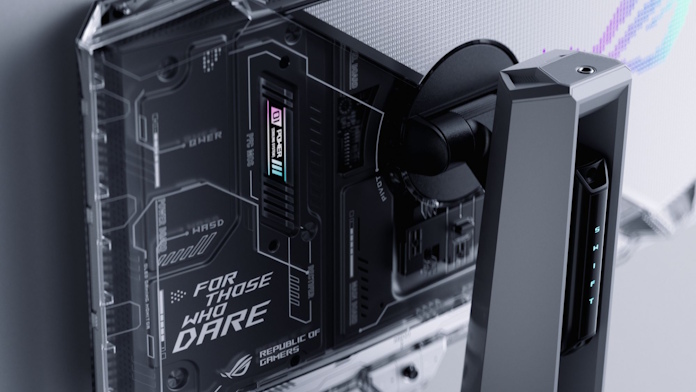
Whatever type of gaming monitor you end up going with, you’ll be pleasantly surprised by its feature set. It wasn’t that long ago that gamers had to choose between the specifications that were most important to them. Today’s monitors let you have it all. If it’s been a few years since you last bought a gaming monitor, or if you’re buying your first PC gaming monitor, don’t miss out on the incredible sales and discounts happening this fall.

